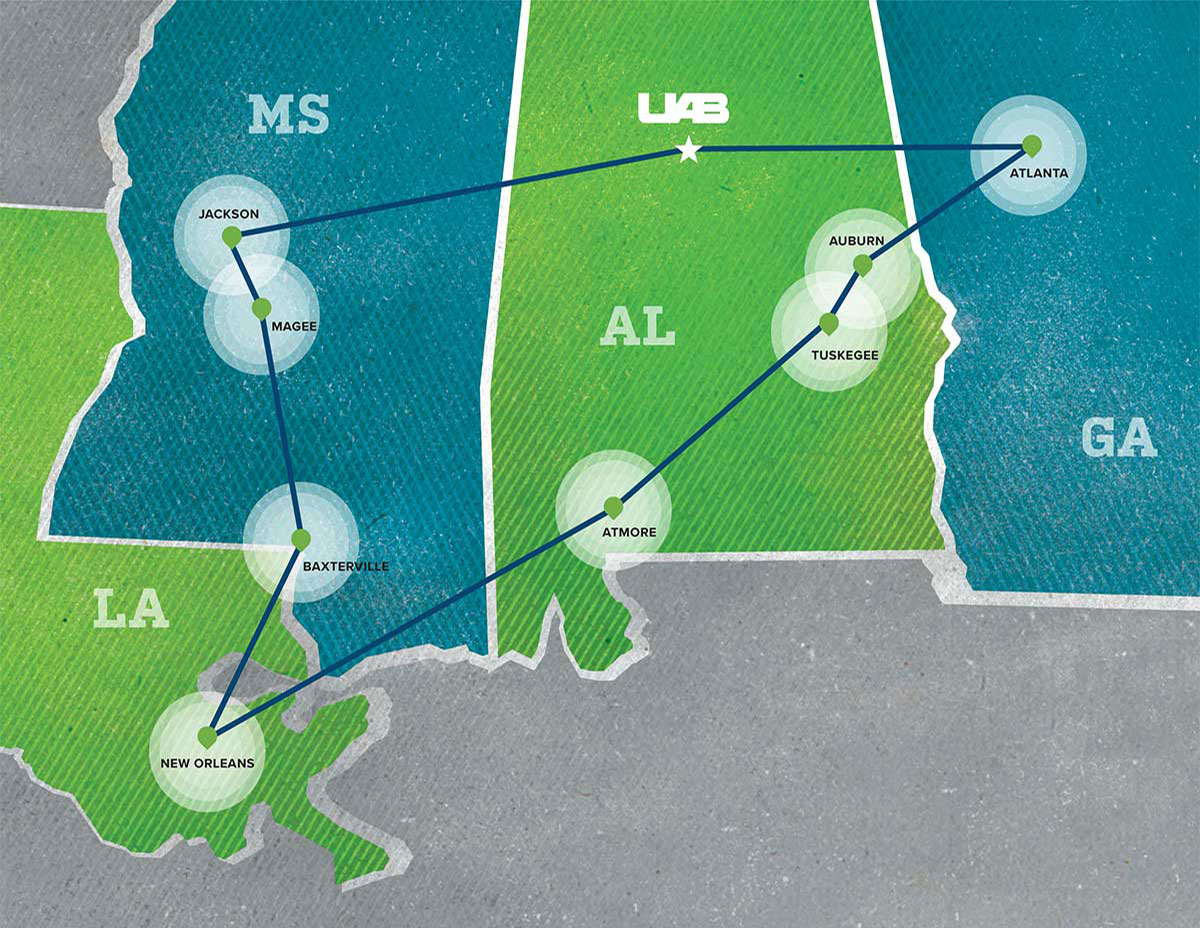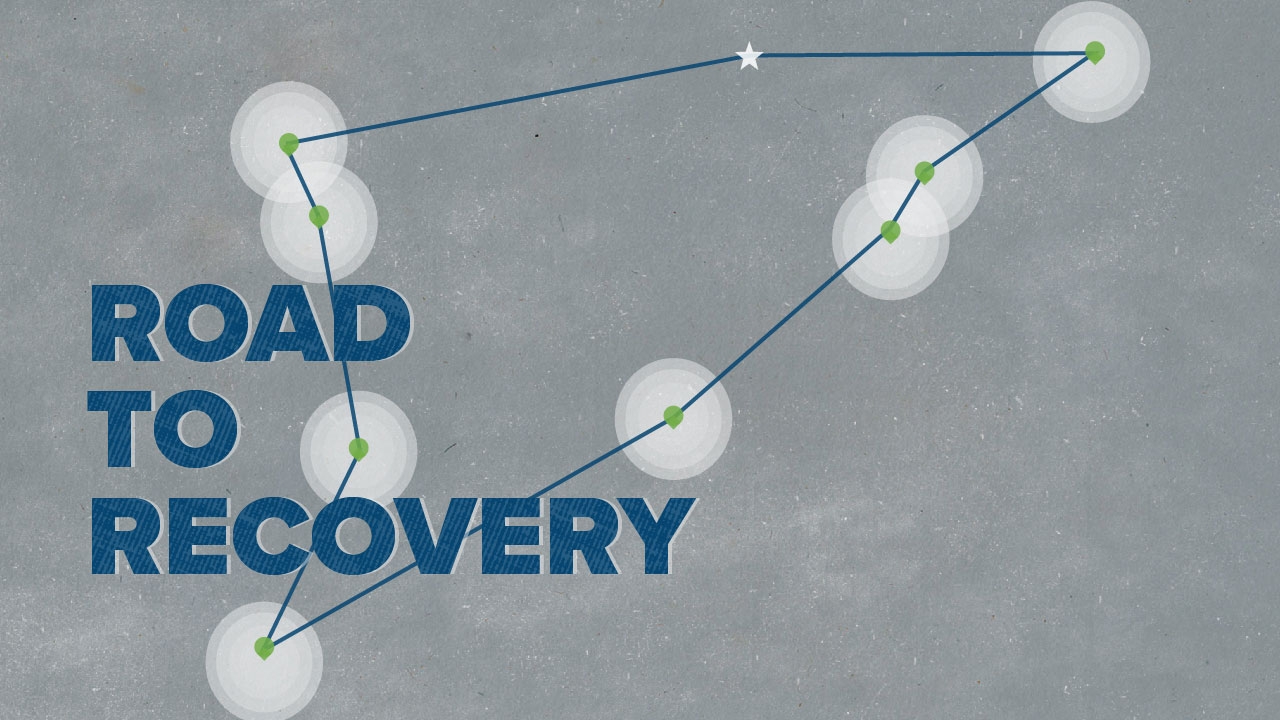In October 1964, at the height of the Cold War, the United States detonated a nuclear device 2,700 feet beneath BAXTERVILLE, MISSISSIPPI. Two years later, the federal government did it again. The powerful blasts provided vital information about the detection of underground nuclear tests, and the project was deemed a success. But local residents aren’t so sure. Today, decades later, they remain suspicious of radiation-related health problems, despite continuous water and soil monitoring that has found no evidence of contamination.
The lessons of Baxterville—that early, constant communication is key to building community trust—is an important one for future public health practitioners. But it’s not found in a textbook. So this summer, 15 School of Public Health undergraduate and graduate students visited Baxterville in person as part of a two-week course that traveled the South.
“I want students to realize they can make a difference in our backyard,” says course creator Lisa McCormick, Dr.P.H., associate dean for public health practice. “The rural and medically underserved communities that surround us suffer from some of the same complex problems you see in developing countries.” At each stop, students explored issues affecting the health of different populations, from towns to tribes. They focused on inequities and “social determinants”—poverty, pollution, history, and disaster response, among other factors. “You have to understand the underlying root causes of health problems before you can solve them,” McCormick says.
The trip also was a great networking opportunity, McCormick adds. Students heard about efforts to meet health challenges from officials at government agencies, nonprofits, and community organizations, which highlighted the interdisciplinary nature of public health practice and opened their eyes to potential career paths. Here, a few of the travelers describe meaningful lessons from stops on their journey.

JACKSON, MISSISSIPPI
“An alarming four out of every 10 men who have sex with men in the Jackson area have tested positive for HIV, the highest rate in the nation. We visited My Brother’s Keeper (MBK), an organization doing tremendous work in preventing and treating HIV. After noticing that many of their clientele felt uncomfortable seeking health care from a fear of judgment or stigma, MBK opened its own clinic where a sense of belonging—a sense of validation—is a core tenet. They serve the community through a whole-person view of health to eliminate health disparities and promote health equity.”
—Kachina Kudroff, public health doctoral student, San Francisco, California
MAGEE, MISSISSIPPI
A former tuberculosis sanatorium offered insights about public health history.
NEW ORLEANS, LOUISIANA
“Seeing the Lower Ninth Ward and observing disparities in Hurricane Katrina rebuilding efforts was hard. Political, policy, and systemic issues, such as unstable housing and a risk for natural disasters, have a real health impact. The average life expectancy in that area is 55 versus a neighborhood a few miles away where life expectancy is 80. We can approach health from the perspectives of housing and economic empowerment. We can’t expect a population to be healthy without these things.”
—Claire Auriemma, dual M.P.H./M.B.A. student, San Francisco, California
ATMORE, ALABAMA
The Poarch Band of Creek Indians Tribal Health Department highlighted efforts to decrease health disparities through access to care, health education, and wellness programs.
TUSKEGEE, ALABAMA
“At the Shiloh-Rosenwald School, where the Tuskegee Study [the 40-year federal syphilis study turned unethical experiment] took place, the children of men involved spoke about overcoming that experience. We saw their resilience and how education was an important factor in their socioeconomic well-being and health. Educating people is the first step in good public health.”
—Catherine Toms, public health graduate student, Birmingham
AUBURN, ALABAMA
Visits to the Alabama State Diagnostic Laboratory and Auburn University’s College of Veterinary Medicine illuminated links between human and animal health.
ATLANTA, GEORGIA
[Working for] “the Centers for Disease Control and Prevention is the end goal for many public health students, but in going there and meeting with alumni,
we saw that it’s not really an end goal, but just the beginning. There are fellowships and programs where you can implement your own ideas.”
—Auriel Thompson, public health undergraduate student, Birmingham


